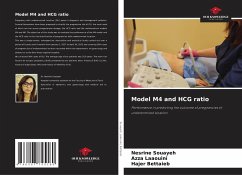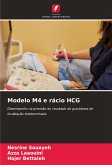Pregnancy with undetermined location (GLI) poses a diagnosis and management problem. Several biomarkers have been proposed to stratify the progressive risk of GLI, the most used of which are the serum progesterone dosage, the HCG ratio and the mathematical models M4 and M6. The objective of this study was to evaluate the performance of the M4 model and the HCG ratio in the risk stratification of pregnancies with undetermined location.This was a single-center, retrospective, descriptive and analytical study carried out over a period of 6 years and 4 months from January 1, 2017 to April 30, 2023 and covering 384 cases of pregnancies of undetermined location recorded within the department. of gynecology and obstetrics at the Ben Arous regional hospital.We collected 384 cases of GLI. The average age of our patients was 32.8 years. The main risk factors for ectopic pregnancy (EUG) presented by our patients were: History of EUG (11.3%), history of tubal plasty (4%) and history of infertility (6 %).
Bitte wählen Sie Ihr Anliegen aus.
Rechnungen
Retourenschein anfordern
Bestellstatus
Storno








